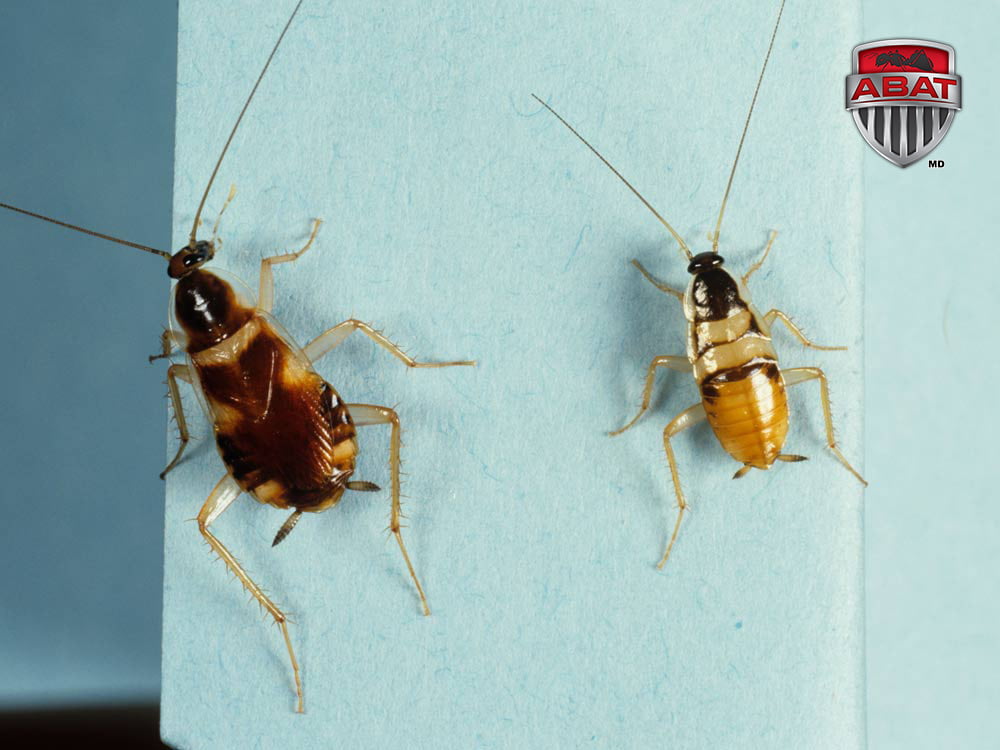The brown-banded cockroach in Honduras
| French name | Blatte à bandes brunes |
| English name | Brown-banded cockroach |
| Latin Name | Supella longipalpa |
| Class | Insects |
| Order | Blattodea |
| Family | Ectobiidae |

The brown-banded cockroach (Supella longipalpa) thrives in countries with hot, humid climates. There is no doubt these conditions exist in Honduras and that they promote the proliferation of cockroaches. The “Bay Islands” (Islas de la Bahía) such as Útila is no exception.
Infestation of cockroaches in Honduras
Cockroaches breed in buildings that have been vacant for a long time and where food has been left in the cupboards. These insects are omnivorous and feed on anything they can find, especially starch-based foods (bread, pasta, rice, grains, etc.).
Holiday accommodations
Cockroaches cause damage in homes, but also in hotels, restaurants, food shops, etc.
They are found in all the warm and humid areas of a house, such as the kitchen or washroom. Even if basic hygiene standards are maintained and the site is regularly cleaned, cockroaches reproduce very quickly and invade everything. A female produces on average 13 egg capsules (a total of 230 eggs) during its adult life!
In seaside villas, hotels, shops or restaurants, cockroaches always hide in warm, humid and dark areas such as:
- Kitchen cupboards
- Behind furniture
- Under the sink and bath tub
- In ductwork (columns, pipes, air vents, heating systems, etc.)
- In the motors of household appliances
- In the water heater
- Etc.
Additionally, cockroaches are difficult to spot because they hide in dark corners and often come out at night, like their cousins
Cockroaches often infiltrate homes or shops via:
- Packaging, cartons and boxes
- Storage bins for vegetables and exotic fruit
- Trash containers
- Antique furniture
- Moving vans
- Tourists’ luggage and suitcases
Only a pest control management expert can implement an efficient solution, as he knows which methods to use and is competent to apply them in order to eliminate cockroaches.
You own a home in Útila
If your villa is being overrun by cockroaches, an immediate and radical treatment is needed, as cockroaches are very resistant to insecticidal products. A pest management expert will come to your home for an initial diagnosis and to evaluate the size of the existing population.
He will then use approved products and carry out regular inspections.
Treatment will consist in professional residual spraying (using a long-lasting insecticide) or the use of chemical barriers.
An integrated pest control management strategy against cockroaches takes into consideration the insects’ general habits, feeding preferences, reproductive cycle, etc.
The exterminator knows exactly how to use these products and methods so that you need not fear any harmful health effects.
Don’t be fooled – even if there is only one cockroach left, the procedure must be repeated!
Reducing the level of humidity in rooms throughout the home is also recommended, as humidity largely contributes to the presence of cockroaches. Replacing worn out taps and fittings, air exhaust vents, ventilation ducts or even controlled mechanical ventilation systems can reduce the risk of being infested by insects.
Travelling to the Caribbean?
So you’ve rented a villa or a hotel room on Útila Island and you’ve noticed cockroaches in your rental?
Informing the owner or manager of this is an absolute must in order for them to be able to act quickly.
Take precautions so as not to bring any cockroaches back with you in your luggage. Contact us to find out what can be done. As specialists in the management of insects, our experts will provide practical advice and can even pack your luggage (bags and suitcases) in air tight bags so that female cockroaches don’t lay their eggs in your luggage or clothing.
Cockroach description and reproduction
The adult brown-banded cockroach measures from 10 to 14.5 mm in length.
Its body is brown and its wings have two more or less defined dark bands.
The male’s wings cover its entire abdomen, whereas the female’s wings are short.
Wingless nymphs have two bands of a light color on their thorax, which differentiates them from other species.
The female produces its eggs in an ootheca or egg pod (resembles a rigid capsule). After two days, the female glues the capsule (containing an average of 15 eggs) in a dark corner somewhere in the building, inside furniture or on tapestries.
Incubation and development of the nymph takes 3 to 4 months.
Once at the adult stage, cockroaches can live 3 to 6 months by feeding on organic substances.
It should be noted that their growth will be interrupted if the temperature drops below 21°C, which is not the case in Honduras.
Diseases transmitted by cockroaches
Tourists, residents and vacationers may get sick with “turista” or traveler’s diarrhea. This is an intestinal toxi-infection most often caused by bacteria or parasites. Transmission occurs through raw vegetables, unpeeled fruit, water, ice cubes, etc.
Here are a few hygiene tips to help prevent illness:
- Carefully wash or peel your fruits and vegetables before eating them
- Order drinks without ice cubes if you have doubts about the bar’s or the restaurant’s cleanliness
- Eat foods that have been cooked at a temperature of more than 60°C
- Drink bottled water
- Don’t use tap water to brush your teeth if there are cockroaches where you’re staying, as they can spread germs in the building’s pipes
“Turista” can present with the following symptoms:
- Diarrhea
- Nausea or vomiting
- Excessive fatigue
- Loss of appetite
- Abdominal pain
- Occasional low-grade fever
Recovery begins after a few days of dieting and a course of antibiotics if needed.
For fast and efficient treatment against cockroaches, it is therefore important to contact a company that specializes in cockroach eradication.


